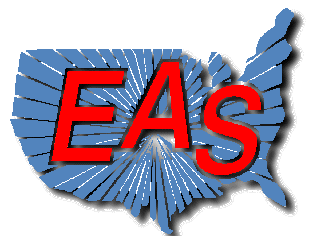FCC Extends EAS CAP Deadline Again

WASHINGTON: The Federal Communications Commission has again extended the deadline for TV and radio stations to implement new Emergency Alert System technology. The commission released its Fourth Report and Order on the integration of Common Alerting Protocol, a new open-standard XML-based format for EAS messages, giving participants until June 12, 2012 to comply. They had been facing a deadline of Sept. 30, 2011, but as the date approached, it became clear that there were too many obstacle to compliance.
For one thing, CAP gear has to conform to FCC EAS rules, known as Part 11. However, the commission has yet to revise Part 11 to accommodate CAP. Groups supporting an extension said cash-squeezed stations might end up with useless gear once the FCC decides it doesn’t meet the criteria yet to be determined.
This will make the second extension to the deadline, triggered last year when the Federal Emergency Management Administration published the technical requirements for CAP-formatted alerts. One Ministries, Inc. of Santa Rosa, Calif., bought gear to meet the original deadline and found itself alone in the wilderness.
“We purchased a CAP system to meet the FCC’s original implementation deadline of March 29, 2011 only to find that there were absolutely no sites to monitor,” its filing read. “We feel it is irresponsible for the FCC to require broadcasters to migrate to having CAP-compliant devices when the federal government hasn’t completed its works to first get the system up and running.”
Smaller TV, radio and cable operations have another problem regarding CAP-compliance.
“We are a small, privately owned 500 Watt AM radio station located geographically in rural West Sacramento,” reads the filing from Teresa and Trudi Powell, owners of KJAY-AM near the California capital. “We cannot get high-speed Internet access out here because we are too far from the hubs. We are trying to be compliant with the new CAP-EAS, project... We are not sure how to proceed.”
The National Association of Broadcasters was among the groups requesting a deadline extension. The group is currently holding its annual Radio Show in Chicago, where Radio World’sLeslie Stimson reported that a “cheer erupted in a regulatory session room” when the order was issued.
CAP was developed to homogenize the alerting process for the various agencies that issue warnings. Using CAP, local, state and federal officials are supposed to be able to send a single warning that can be picked up by TVs, radios, cellphones, computers and other communications platforms such as digital signage. It is part of a larger federal effort to update the nation’s emergency alert process, known as the Integrated Alert Public Warning System, or IPAWS. Under the current EAS structure, designated radio stations receive an alert and pass it to TV and radio stations that send it to other radio and TV operators, including cable and satellite. The new structure will rely on data network where an alert is sent to an Emergency Operations Center, which files it and forwards it to a server.
The National Cable & Telecommunications Association, the Society of Broadcast Engineers, American Cable Association, the Association for Maximum Service Television (now part of the NAB), National Public Radio, the Association of Public Television Stations, and the Public Broadcasting Service all joined the NAB in requesting another extension, with support from Verizon.
Two equipment manufacturers opposed an extension on the grounds that their gear could be updated if necessary. Monroe Electronic and Sage Alerting Systems also said that a “suitable certification regime is already in place,” under FEMA. The agency’s Responder Knowledge Base product page shows seven sporting the IPAWS icon, up from just three in mid-June.
“While we agree with Monroe and Sage that the purchase of integrated CAP-complaint devices is neither unreasonable nor particularly risky, their comments do not speak to whether the commission should require such purchases at the current stage of this proceeding, when the regulatory framework remains somewhat fluid,” the R&O said. “Rather, we find that more regulatory certainty is warranted before we require EAS Participants to comply with regulations that may soon change and thereby necessitate additional and potentially avoidable expenditures.”
~ Deborah D. McAdams
The professional video industry's #1 source for news, trends and product and tech information. Sign up below.
